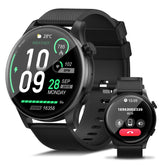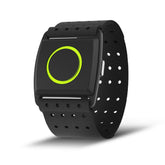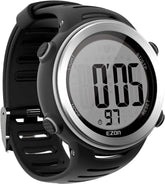Cycling Powerhouse: Heart Rate Monitors for High - Intensity Training
Find out how heart rate monitors can take your cycling training to the next level. Discover high-intensity interval cycling workouts and how to use heart rate data to push your limits.
For cyclists chasing faster splits or athletes tackling grueling climbs, high-intensity interval training (HIIT) is the key to breaking plateaus. But to truly maximize these workouts, you need more than grit—you need data. A heart rate monitor turns your effort into actionable insights, helping you tailor intensity, rest, and recovery to your body’s signals. Here’s how to leverage heart rate data to dominate high-intensity cycling training.
Why Heart Rate Data Drives High-Intensity Success
High-intensity interval training thrives on precision: pushing to near-max effort, then recovering just enough to repeat. Without tracking heart rate data, you’re guessing—risking burnout or underperforming. Your heart rate is a direct gauge of exertion:
- 70–80% max heart rate: Moderate intensity (base building)
- 80–90% max heart rate: High intensity (interval efforts)
- 90–100% max heart rate: All-out sprints (peak power)
For cycling enthusiasts, this data transforms vague “hard” or “easy” efforts into intervals that hit exactly the right intensity to boost speed, endurance, and power.
How Heart Rate Monitors Elevate HIIT for Cyclists
A quality heart rate monitor does more than display numbers—it syncs with your ride to optimize every interval. Take models like those in the EZON heart rate series: designed for high-intensity cycling, they deliver real-time alerts when you cross into target zones, ensuring you don’t hold back on sprints or overexert during recovery.
Key features to leverage:
- Zone-based alerts: Set your monitor to ping when you drop below your high-intensity threshold (e.g., 80% max heart rate) during intervals, or exceed it during recovery.
- Interval tracking: Pair with cycling apps to log effort duration, heart rate peaks, and recovery time—critical for refining your HIIT routine.
- GPS integration: Top monitors, like EZON’s sports watch series, combine heart rate with distance and speed data, so you know exactly how effort correlates to performance on the road or trail.
High-Intensity Interval Training: Using Heart Rate to Push Limits
HIIT for cycling follows a simple formula: work hard, rest smart. Here’s how to use heart rate data to master it:
1. Warm-Up: Prime the Engine
Start with 10–15 minutes of easy pedaling, gradually building to 60–70% max heart rate. This boosts blood flow, loosens muscles, and preps your cardiovascular system for hard efforts. A heart rate monitor ensures you don’t rush this step—skipping a proper warm-up is a shortcut to fatigue.
2. Intervals: Hit the Zone
For high-intensity efforts (20–60 seconds), aim for 80–90% max heart rate. Examples:
- 30 seconds all-out sprint + 1 minute easy spinning (repeat 8x)
- 45 seconds uphill effort + 90 seconds recovery (repeat 6x)
Let your monitor guide you: if your heart rate lags below target, push harder; if it spikes above 90% too quickly, ease slightly to sustain the interval.
3. Recovery: Let Heart Rate Dictate Rest
Recovery intervals aren’t just about slowing down—they’re about letting your heart rate drop to 60–70% max before the next effort. A monitor tells you exactly when you’re ready: rush it, and subsequent intervals will suffer; wait too long, and you lose training momentum.
4. Cool-Down: Bring It Home Safely
End with 5–10 minutes at 50–60% max heart rate. This helps flush lactic acid and stabilize blood pressure—key for reducing soreness and speeding recovery.
Breaking Cycling Limits with Data
Every cyclist hits a wall: a climb that feels unbeatable, a sprint that won’t quicken. The solution? Using heart rate data to identify weaknesses. For example:
- If your heart rate spikes rapidly during intervals, focus on building aerobic endurance first.
- If recovery heart rate stays elevated, prioritize rest and nutrition to improve resilience.
EZON’s multi-sport watches excel here: they don’t just track heart rate—they analyze trends over time, showing how your body adapts to training. It’s like having a coach in your wrist, pinpointing when to push harder and when to back off.
EZON: Engineering Performance for Cyclists
Behind every great heart rate monitor is a brand that understands the demands of high-intensity cycling. EZON, founded in 2013 by a team of designers, engineers, and sports experts, integrates hardware, software, and services to deliver tools that work as hard as you do. From heart rate-specific models to multi-sport powerhouses, EZON’s technology turns data into results.









